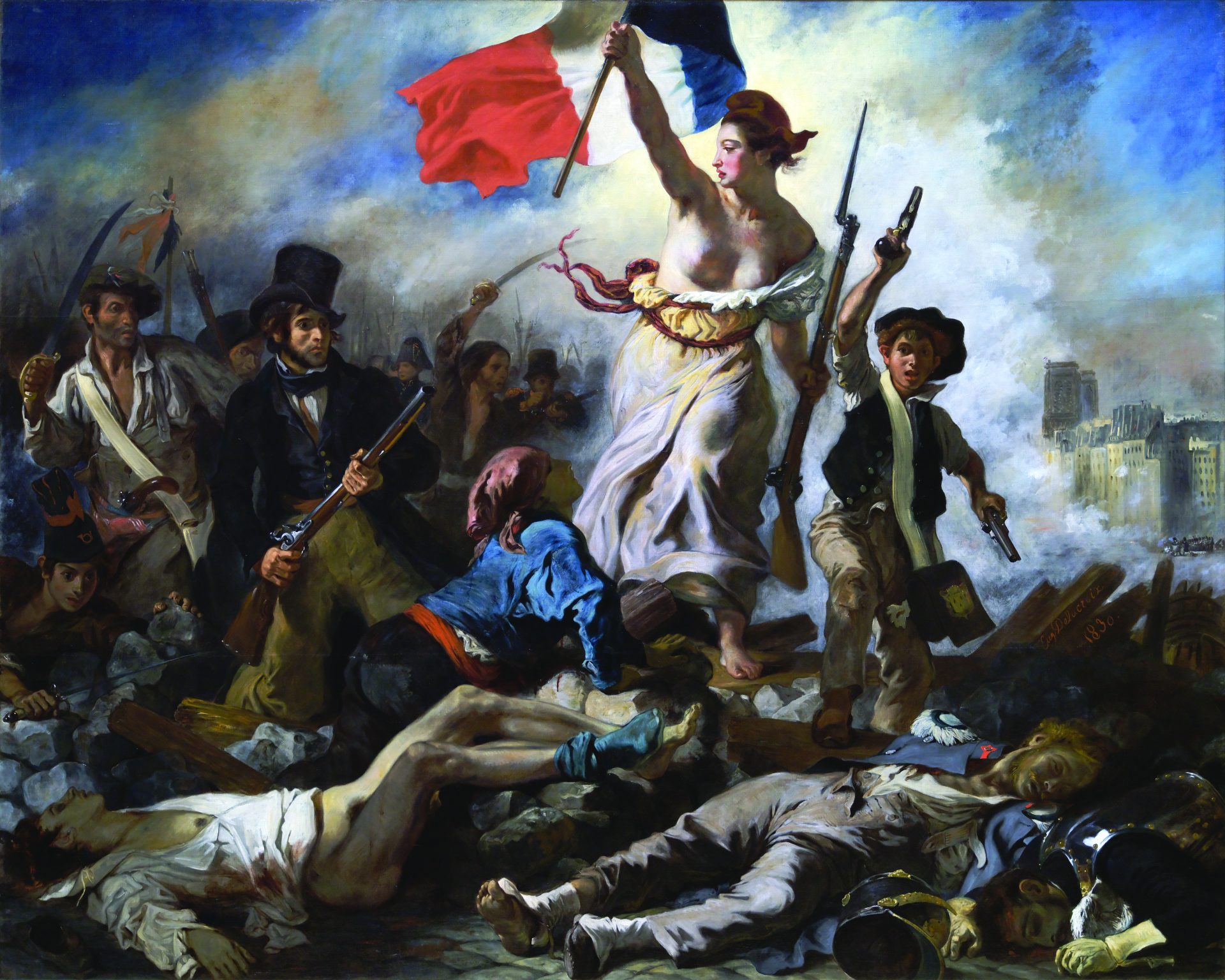
Inherent Vice, Thomas Pynchon’s seventh novel, follows so quickly on the heels of his sixth, the massive Against the Day (2006), that the teams of specialists who go over the fuselage of every Pynchon text as if it were a spy plane forced down by mechanical difficulties, identifying the probable origin and function of each part, writing up the results in Pynchon Notes or on the Internet, must be gnashing their teeth with weariness. The red telephone again? Aw, sheesh. If only there were some way to persuade them not to worry! Inherent Vice is by far the least puzzling Pynchon book to enter our airspace: a goof on the Los Angeles noir, starring a chronically stoned PI with a psychedelic wardrobe and a hankering for pizza. At fewer than four hundred pages, it’s also the shortest Pynchon novel to appear since Vineland (1990); you could almost recommend it to your book club, or to your kids, if they still read books.
Inherent Vice takes place in the same world as Vineland, a California peopled by hippies and the cops who prey on them, plus assorted musicians, lunatics, militants, and crooks. But where Vineland is set in 1984, the dark heart of the Reagan years, Inherent Vice happens in 1970, when the counterculture is still in full swing, even if signs of its decay have begun to appear. Enter “Doc” Sportello (an Italian word that roughly means either “door” or “window”), a detective whose Gordita Beach apartment features a beach volleyball autographed by Wilt Chamberlain in Day-Glo felt marker and such like. Doc’s ex-girlfriend Shasta Fay appears one night to tell him that people are plotting against her new boyfriend, a real estate mogul named Mickey Wolfmann. Soon Mickey disappears, and after a scuffle at a massage parlor that offers something called the Pussy-Eater’s Special for only $14.95 (OK, so maybe you don’t want to recommend Inherent Vice to your kids), one of his bodyguards turns up dead, and the plot, or plots, are off.
An outline of the narrative strands that run through Inherent Vice would look like a web spun by a spider on marijuana: densely connected in the middle, but lapsing at the edges into loopiness. Suffice it to say that the assembled characters are, for lack of a better word, Pynchonian: There’s the ex-con Tariq Khalil, now affiliated with the Warriors Against the Man Black Armed Militia (wambam); there’s Coy Harlingen, a surf-band saxophonist who may or may not be dead; there’s Fritz, possibly the first hacker to break into the arpanet (the Internet’s precursor). There are puns and musical numbers and references to the lost continent of Lemuria. And at the center of it all, there’s the Golden Fang, which is certainly a ship but may also be a drug cartel, or a syndicate set up by dentists for tax purposes, or the secret power that controls the world.
Shades of the Tristero, the ultrasecret society in The Crying of Lot 49 (1966) that served as a kind of shadow postal system, a communication network for America’s disinherited. In fact, there are more than glancing similarities between the novels—both take place mostly in Southern California; both concern vanished real estate developers and unfathomable conspiracies; but there the resemblances end. Where the characters in Lot 49 debated the meaning of obscure texts, no one in Inherent Vice so much as glances at a book, unless it’s the Golden Fang Procedures Handbook; Doc has even let his subscription to Naked Teen Nymphos lapse. What’s more, he suffers episodically from “Doper’s Memory,” which is to say, from an inability to remember anything reliably, or to be sure that certain events have happened at all.
The novel unfolds in a haze; even the weather in Inherent Vice is foggier than you’d expect for LA. Driving toward Santa Monica early on, Doc finds himself in the thick of a coastal fog that “obliged the unwary driver to shift down the minute he entered this alien atmosphere, with daylight dimmed, visibility reduced to half a block, and all colors, including those of traffic signals, shifted radically elsewhere in the spectrum.” This sounds like an invitation to paranoia, a reminder to look, as generations of Pynchonists have, for “other orders behind the visible,” but the reader who scries this world for occult presences will come away unsatisfied. There’s some talk of a war between Atlantis and Lemuria, and even a brush with history: The schooner Golden Fang was formerly known as the Preserved, a name with overtones of Puritan salvation. But history is a closed book to the characters of Inherent Vice. When Doc learns that Mickey Wolfmann, a Jew, has members of the Aryan Brotherhood for bodyguards, he has to ask, “Jews and the AB . . . Isn’t there . . . something about, I forget . . . hatred?”
In the absence of reliable data, the plot moves forward by way of hunches and hallucinations, many of which are deliriously funny, like the moment Doc’s lawyer, himself no stranger to the joys of cannabis, watches The Wizard of Oz on a color TV set for the first time: “If that’s what we see,” he asks excitedly, “what’s happening with Dorothy? What’s her normal Kansas color changing into? Huh? What very weird hypercolor?” But these insights don’t add up or illuminate anything beyond themselves. In their intricacy and unimportance, even the solutions to the tale’s various mysteries—where did Mickey go? Who killed his bodyguard, and why?—pass out of the reader’s memory as quickly as flashes of marijuana-induced genius.
No wonder the color palette of Inherent Vice tends toward acid purples and magentas, as if we’ve followed Dorothy to hyper-Munchkin-land: It’s not so much a question of orders behind the visible, as of the visible trying extrahard to make itself seen through the fog. Even the sex is lurid in a way that Pynchon’s writing, which no one would call prudish, usually isn’t. “By now she was draped across his lap,” says the narrator, describing one of Doc’s trysts, “her hands beneath her playing with her pussy, her ass irresistibly presented, her intentions, even to Doc, clear enough.” You’d have to be even worse off than Doc himself to look for a secret message in that.
What seemed like tragedy in The Crying of Lot 49 returns here as farce, and there’s something tragic about the transformation. You could say Pynchon is losing his edge, that his paranoid sensibility is not so keen at seventy-two (his present age) as it was in 1969, when he was only thirty-two, living in the LA area, and working on his magnum opus, Gravity’s Rainbow (1973). You could even suspect him of nostalgia. But the other possibility—with Pynchon, there’s always another possibility—is that he has written a book about losing it, about memory and, more to the point, forgetting. Beneath Inherent Vice’s riffs and twists and red (or are they green?) herrings, there’s a deep sadness, a despair of ever making anything out clearly. Here’s Doc looking at some photographs:
Doc got out his lens and gazed into each image till one by one they began to float apart into little blobs of color. It was as if whatever had happened had reached some kind of limit. It was like finding the gateway to the past unguarded, unforbidden because it didn’t have to be. Built into the act of return finally was this glittering mosaic of doubt. Something like what Sauncho’s colleagues in marine insurance liked to call inherent vice.
If there’s a secret shimmering in the novel’s fog, it’s that the limit of what can be known is imposed not by any nefarious organization, but by memory itself. All recollection is flawed—that’s the meaning of inherent vice, a defect in the very nature of a thing, which no insurance policy will cover. And if the dopers are any different from the squares, it’s because they feel the defect sooner and harder than most. That dim light? Those shifted colors? They’re the work of memory, which turns the present day into the alien past.
The really sad thing is that no one in Inherent Vice cares about the past, not even Doc. One of the novel’s most poignant moments has to do with the failure not of the ’60s, or of America, or of any kind of revolution, but of reading itself. It comes when Coy, the possibly dead saxophonist, deep in a convolution of the plot, observes “a little girl . . . breathless with excitement in front of a lighted bookstore window, calling to her mother to come and look. ‘Books, Mama! Books!’”—as if she’d never seen them before. The scene is pregnant with sorrow, not just because Coy misses his own daughter but because books themselves have become an occasion for surprise, a state of affairs that, however true it was in 1969, is more so forty years later. At the end of the book, Doc wishes “for the fog to burn away, and for something else this time, somehow, to be there instead,” a very Pynchonian yearning—and in fact, the line echoes one Pynchon wrote in Vineland: The mobster Ralph Wayvone Jr. watched “as the fog now began to lift to reveal not the borderlands of the eternal after all, but only quotidian California again, looking no different than it had.” Has Pynchon forgotten his own phrase, or is he hinting that another world exists, that it is written already? Now there’s something for the specialists to puzzle over.
Paul La Farge is the author of The Facts of Winter (McSweeney’s, 2005).






